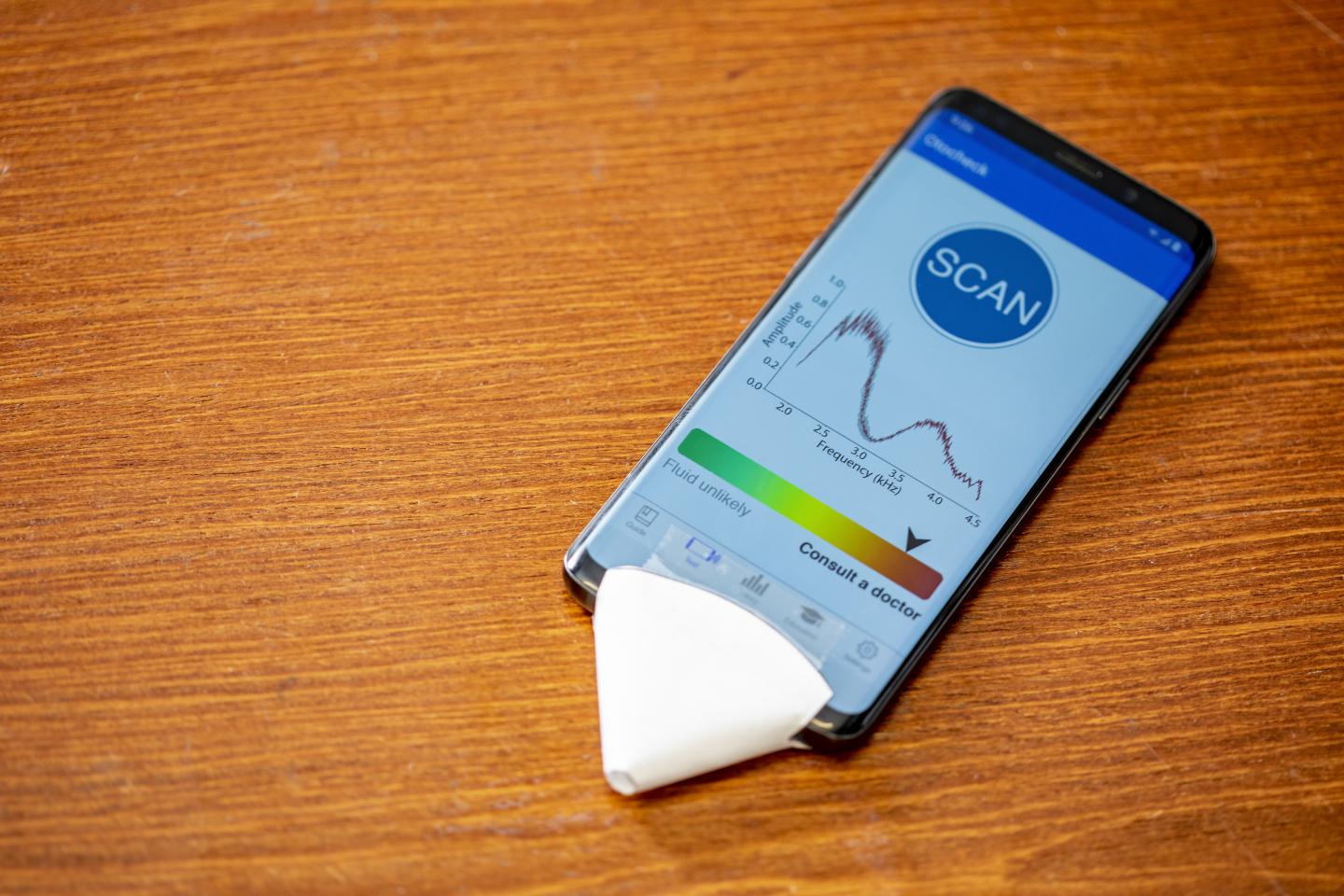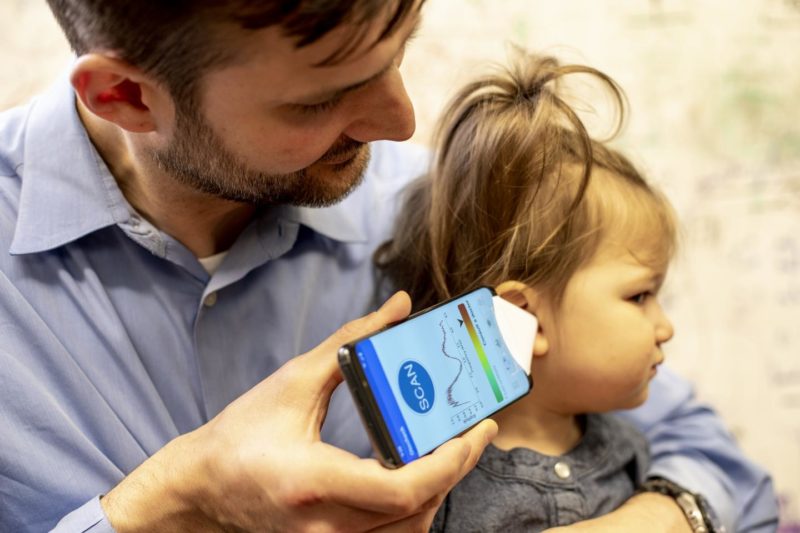
Scientists at the University of Washington have created a smartphone app that can detect ear infections using nothing more than a piece of paper and the phone’s microphone and speaker.
The app, which uses artificial intelligence (AI), is able to determine the likelihood of fluid present with a probability detection of 85%, the researchers claim.
The smartphone app ‘hears’ ear infections by sending sound waves from a smartphone speaker through a paper funnel and into the ear. Using the smartphone’s microphone, the app measures how the sound waves change as they bounce off the eardrum.
“It’s like tapping a wine glass,” said co-first author of the study Justin Chan, a doctoral student in the University of Washington’s Allen School. “Depending on how much liquid is in it, you get different sounds. Using machine learning on these sounds, we can detect the presence of liquid.”
Ear infections are caused by a build-up of fluid behind the eardrum. When there is no fluid behind the eardrum, the sound waves sent into the ear (soft chirping sounds) vibrate around the eardrum and return as a variety of sound waves.
However, a blocked eardrum does not vibrate in the same way and reflects the original sound waves back. This creates a deep dip in the signal, compared to a shallow dip when the eardrum is clear.
How well do you really know your competitors?
Access the most comprehensive Company Profiles on the market, powered by GlobalData. Save hours of research. Gain competitive edge.

Thank you!
Your download email will arrive shortly
Not ready to buy yet? Download a free sample
We are confident about the unique quality of our Company Profiles. However, we want you to make the most beneficial decision for your business, so we offer a free sample that you can download by submitting the below form
By GlobalDataThe smartphone app measures the difference in these sound waves and displays its diagnosis on screen.
Ear infection? There’s an app for that
The researchers say parents could use the app to help decide whether or not they need to take their child to the doctor.
“Designing an accurate screening tool on something as ubiquitous as a smartphone can be game-changing for parents as well as healthcare providers in resource-limited regions,” said co-author Shyam Gollakota, an associate professor in the UW’s Paul G. Allen School of Computer Science & Engineering.
“A key advantage of our technology is that it does not require any additional hardware other than a piece of paper and a software app running on the smartphone.”
Previous smartphone apps have been able to detect ear infections, but required additional hardware.
Ear infections are the most common reason for a child visiting the doctors, according to the National Institute of Health. Once diagnosed, they are often easily treated with antibiotics.

Testing the smartphone app
Researchers trained the smartphone app’s algorithm to detect ear infections by testing the sound waves on 53 children between the age of 18 months and 17 years who were about to undergo surgery.
Around half were for ear tube placement, while the rest for non-ear related surgeries. Out of those having ear surgery, 24 had fluid behind the eardrum versus 24 who did not.
After the surgeries, doctors knew with certainty whether the children had any fluid build-up behind the eardrum – 26 of those across both groups had build-up. Comparing the known data with the diagnosis from the smartphone app resulted in a diagnosis accuracy of 85%.
“What is really unique about this study is that we used the gold standard for diagnosing ear infections,” said co-first author Dr. Sharat Raju, a surgical resident in otolaryngology-head and neck surgery at the UW School of Medicine.
“When we put in ear tubes, we make an incision into the eardrum and drain any fluid present. That’s the best way to tell if there is fluid behind the eardrum. So these surgeries created the ideal setting for this study.”
When will you be able to use the smartphone app to hear ear infections?
The researchers say that their method is on par with current methods used to detect fluid in the middle ear. This involves specialised tools that us a puff of air or acoustics. However, as with all medical devices, far greater testing will be needed.
The team also said it can be used for children between 9 and 18 months old, despite being trained on older children.
“Even though our algorithm was trained on older kids, it still works well for this age group,” said co-author Dr. Randall Bly, an assistant professor of otolaryngology-head and neck surgery at the UW School of Medicine who practices at Seattle Children’s Hospital. “This is critical because this group has a high incidence of ear infections.”
Tests using various smartphone models and different types of paper showed consistent results.
“Fluid behind the eardrum is so common in children that there’s a direct need for an accessible and accurate screening tool that can be used at home or clinical settings,” Raju said.
“If parents could use a piece of hardware they already have to do a quick physical exam that can say ‘Your child most likely doesn’t have ear fluid’ or ‘Your child likely has ear fluid, you should make an appointment with your paediatrician,’ that would be huge.”
The researchers plan to make the app commercially available through a spinout company, Edus Health.
The team published its results May 15 in the journal Science Translational Medicine.
Read more: Machine learning predicts heart attacks with 90% accuracy







